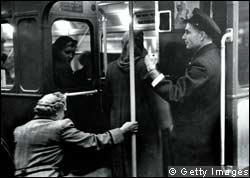As I previously blogged, a recent study in Shanghai found that schoolchildren given milk with added bacteria had fewer colds than children given milk without added bacteria. The study was funded by Danisco, a Wisconsin company that makes bacteria-containing (“probiotic”) capsules. Obviously they want to sell more of their product. But ordinary yogurt probably produces the same result. Aaron Blaisdell told me this:
Since introducing yogurt into my daughter Maggie’s diet on a daily basis about 5 months ago, she’s gotten far fewer colds, and those she did get were milder.
I asked him for details.
Maggie is 4 years old. She eats a bowl of Traderspoint Creamery whole milk yogurt (from grassfed cows) each day. She started day care since 4-months old and now goes to a pre-school. She used to get a cold about every other month (6-8 per year), but since we introduced yogurt daily to her diet about 6 months ago, she’s only had one cold as far as I can remember and it was very mild. Even the cough which used to last a month or two after she recovered lasted only about a week or two.
How much yogurt was she eating before that?
I think she had yogurt once or twice a week for the six months prior to introducing it daily. Before that it was even rarer. We introduced it a few times between the ages of 2 and 3 years old, and after initially liking it for a day or two she would then reject it thereafter. The reason she eats it every day now is because I put Ovaltine in it (about a teaspoon).
Did he make other changes at the same time?
I also try to sneak fermented high-vitamin cod liver oil into the yogurt, but I can only do this if I make it while she isn’t looking. I also put 2-4k vitamin D3 (Carlson’s drops) into it if she isn’t looking when I make it. Also starting at the beginning of this year I switched from organic pasteurized milk to raw milk. I can’t think of any other significant changes in diet, except that I continue to try to cut down on the amount of cereal and crackers she eats and increase the amount of eggs and cheese instead.
Let’s hope she doesn’t read this!
